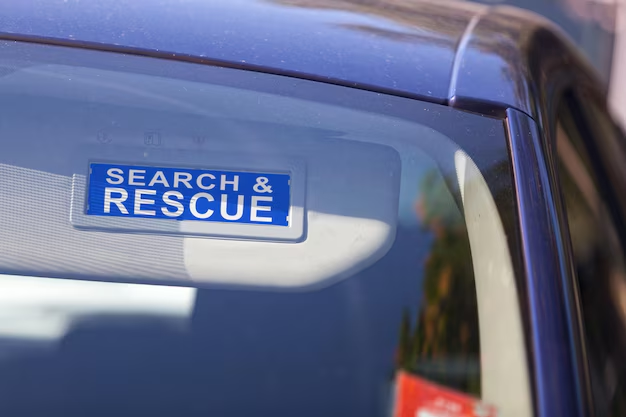Seamless Vehicle Transition: Your Step-by-Step Guide to Transferring Plates to Your New Car
Purchasing a new car is always an exciting experience, but amidst the thrill of driving off in a fresh set of wheels, there are important logistical tasks to tackle—such as transferring your old license plates to your new vehicle. This process might seem like a daunting task, but with the right guidance, it can be seamless and straightforward. Whether you're upgrading, downgrading, or simply switching cars, understanding how to transfer license plates correctly is crucial for legal compliance and smooth driving. Let’s dive into everything you need to know about plate transfers.
Understanding License Plate Transfers
Why Transfer Plates?
Transferring license plates guards against identity theft and fraud while allowing you to maintain the registration history you have with those plates. This process is not just about convenience—even though not having to purchase new plates is a definite plus—but also about ensuring continuity for your vehicle registration and any related legal processes.
Legal Requirements
Each state in the U.S. has specific procedures and requirements for transferring license plates. Generally, you’ll need to prove ownership of both your old vehicle and your new one, and sometimes even submit a special transfer fee. Additionally, your vehicle must be insured before you can complete this process.
Advantages of Transferring Plates
- Cost-effective: Not buying new plates saves you money.
- Avoiding Delays: Using existing plates can help you stay clear of any temporary registration hurdles.
- Environmental Benefits: Reduces waste by recycling your existing plates.
Step-by-Step Guide to Transferring Plates
Step 1: Ensure Eligibility
Before starting the transfer process, make sure you're eligible to do so. Some conditions may prevent plate transfers, such as if you’re moving from one state to another or if your plates are out of date.
Step 2: Gather Necessary Documentation
You'll need to collect several documents to proceed smoothly:
- Current Vehicle Title and Registration
- Driver’s License
- Proof of Insurance
- Bill of Sale for the New Car
- Transfer Plates Application Form
Step 3: Visit the DMV
This is usually the most crucial step. You need to go to your local Department of Motor Vehicles (DMV) office or equivalent to officially process your plate transfer. Bring your documents along with any transfer fees required by your state.
Step 4: Pay Fees
Fees can vary widely, so checking your local DMV's website beforehand can save time and ensure you bring the correct payment method.
Step 5: Receive Approval and Update Registration
Once your paperwork is in order and your application is approved, your new vehicle is officially registered with your old plates. The DMV will issue an updated registration card reflecting this change.
Step 6: Attach Plates to Your New Car
Before driving, make sure your plates are securely attached to your new vehicle. This is where having a simple socket wrench at home can certainly come in handy.
Important Considerations and Tips
Timing is key
In general, the sooner you start the plate transfer, the better. Driving with improperly registered plates can result in heavy fines or even more serious legal issues.
Consider Temporary Plates
If there’s a delay in the process, you may want temporary plates to keep your vehicle legally operable. These can usually be obtained from the dealership or your local DMV while waiting for your transfer to process.
Multiple Cars? Multiple Steps
For those dealing with multiple vehicles, the process can become intricate. It is crucial to have organized documentation for each vehicle to avoid confusion.
Keep Updated on State Policies
Laws around vehicle registration can change. It’s vital to stay updated with your state DMV's regulations, especially if there’s been a major legislative shift that might impact your transfer process.
Challenges You Might Encounter
Common Pitfalls in Plate Transfer
Missing Documentation: Missing even one document can halt your application.
Incorrect Details: A mismatch in personal details or vehicle information can lead to a delay.
Outstanding Tickets or Violations: Any unresolved fines linked to your plates or previous vehicle can block your transfer.
Resolving Issues
If you encounter issues, contact your DMV immediately for clarity. Additionally, consider seeking professional help from vehicle registration services if available.
Visually Distinct Summary Section
Here’s a quick checklist to ensure a hassle-free plate transfer process:
- ✅ Eligibility Check: Verify you can transfer plates.
- 📃 Gather Documents: Collect title, registration, insurance, and bill of sale.
- 🏢 Visit the DMV: Process your application.
- 💸 Pay Required Fees: Check for specific state charges.
- 🔄 Update Registration: Ensure your new car is legally registered.
- 🔩 Secure Plates: Attach them correctly before hitting the road.
Future Considerations
As vehicle ownership and technology continue to evolve, so too will the processes around vehicle plate transfers. Keep an eye out for innovations like digital plates or online registration processes that might streamline this task even further. Staying informed will not only save you time and stress but ensure that your vehicle remains compliant and ready for any road you choose to explore.
In summary, transferring your plates to a new car is a straightforward process when approached step-by-step with attention to detail. By ensuring you have the right documents, understanding your state's specific requirements, and following the outlined steps, you’ll have those plates successfully mounted on your new set of wheels in no time. Enjoy the ride!

Related Topics
- How Do You Transfer a Car Title To Someone Else
- How Long Does It Take To Transfer a Car Title
- How Much Does It Cost To Transfer a Car Title
- How Much Does It Cost To Transfer Title In Florida
- How Much Is It To Transfer a Title
- How Much Is It To Transfer a Title In Florida
- How Much Is It To Transfer a Title In Illinois
- How Much Is To Transfer a Car Title
- How Much To Transfer Car Title
- How Much To Transfer Title In Illinois